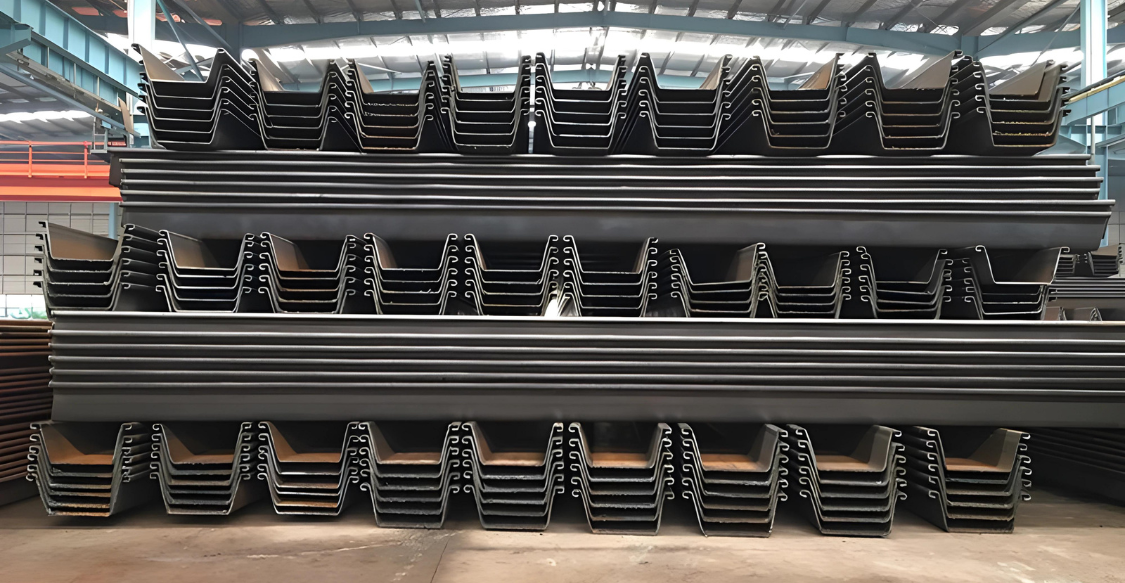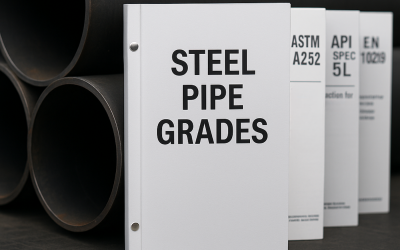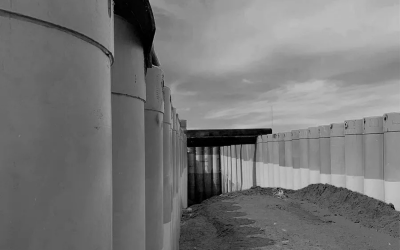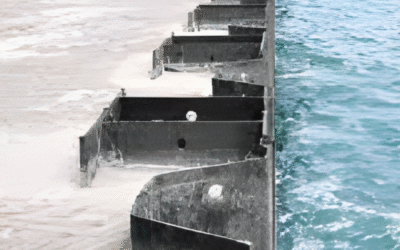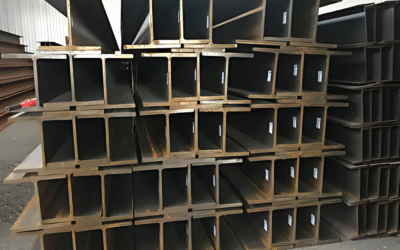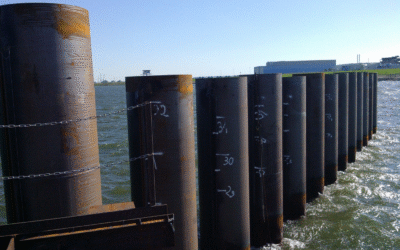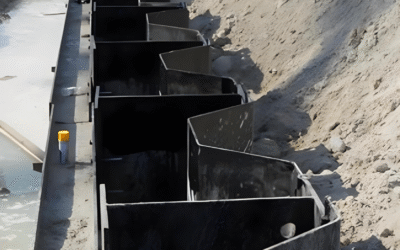What we will talk about in this guide:
-
What sheet piling is
-
How it works
-
Applications
-
Why it is so important
What is Steel Sheet Piling?
Steel sheet piling involves long, interlocking sheets of steel, such as Larssen sheet piles, that are driven into the ground to create a continuous barrier. These barriers can serve several purposes, including retaining soil or water, preventing erosion, or building foundations for bridges, seawalls, and cofferdams.
Moreover, the design of steel sheet piles, with their overlapping and interlocking edges, allows them to lock together seamlessly, forming a tight, durable wall that can withstand significant pressure from earth or water. This is one of the reasons why steel sheet piling is so widely used in construction projects requiring high-strength and long-lasting support.
Types of Steel Sheet Piles
Steel sheet piles are used in several applications. Thus, they come in various forms, including different shapes and sizes. Here are some of the most common types:
U-shaped Steel Sheet Piles (cold/hot-rolled)
They are often used in small to mid-sized projects. Their typical wider surface reduces installation time, improves water tightness, and lowers costs. U-shaped piles are available in an extensive range of lengths and profiles and cold-rolled or hot-rolled forms. Cold-rolled piles are generally used in lighter applications like retaining walls or small-scale flood defences, while hot-rolled piles are stronger and provide better solutions for heavier-duty projects where more strength is needed, such as in dock construction. With their versatility, U-shaped sheet piles are a reliable choice for both small-scale and more demanding projects, delivering the essential strength and stability needed in construction.
Z-shaped Steel Sheet Piles (cold/hot-rolled)
Z-shaped piles are ideal for projects requiring higher load-bearing capacity, such as docks and waterfronts. Z-shaped piles can be cold-rolled and hot-rolled, known for their higher section modulus and better bending rigidity. Hot-rolled Z-shaped piles are typically used in marine projects that require higher strength, such as deep foundations and harbours. Meanwhile, cold-rolled Z-shaped piles are often chosen for lighter projects where some bending resistance is needed, but the load-bearing requirements are not as extreme. The excellent strength-to-weight ratio in Z-shaped piles enhances resistance to deformation during installation and improves structural integrity, making them versatile for a wide range of construction depths and applications.
Straight Web Steel Sheet Piles
Used in specialised projects where high resistance to horizontal forces is required, such as cofferdams or retaining walls. Straight web piles are designed to resist lateral pressure rather than vertical loads, making them ideal for projects where horizontal tension is the key concern. Their vertical faces ensure stability in high-stress environments, and their design helps overcome structural obstacles like uneven load distribution.
Omega (Ω) Shaped Steel Sheet Piles
Omega-shaped piles are best for small-scale excavation projects with limited space. Their lightweight design and simpler, faster installation make them the go-to for temporary structures. They are especially useful in urban projects or temporary applications where space is limited and quick installation is important. They are typically chosen when heavy-duty performance is not the main priority.
How Steel Sheet Piling Works?
The process of installing steel sheet piles typically involves driving the sheets into the ground using vibratory hammers, impact hammers, or pressing techniques. The choice of method depends on factors like soil conditions, the type of project, and environmental considerations.
-
Vibratory Hammers: are quick and efficient, but they may not work well in dense soils. They are ideal for projects where noise or environmental disturbance needs to be minimised.
-
Impact Hammers: They provide more power for harsh soil conditions but are also louder and may disturb nearby structures or the surrounding environment.
-
Pressing Techniques: Suitable for more sensitive areas, as pressing avoids heavy vibrations and is often quieter than hammering techniques.
Once the sheets are driven to the desired depth, they interlock to form a continuous wall. This wall can retain soil, divert water, or serve as a foundation for further construction.
Here is the science behind it: The strength and stability of the wall come from the material properties of steel, combined with the interlocking mechanism, which ensures that the structure remains solid even under extreme conditions, such as high water pressure or unstable soil.
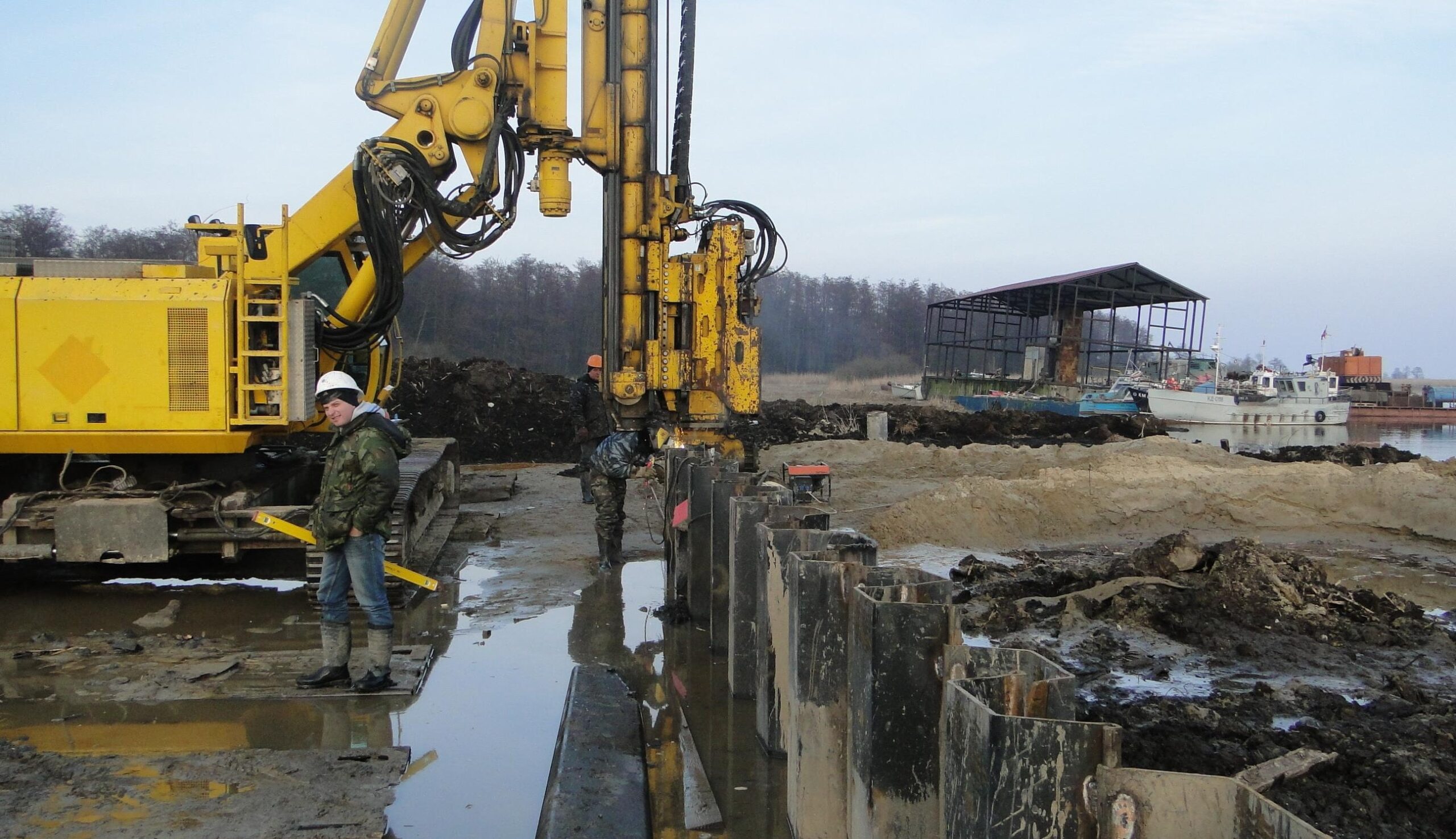
Applications of Steel Sheet Piles
Steel sheet piles are versatile and used in many construction applications due to their strength, durability and ease of installation. Below are some key areas where steel sheet piles are helpful:
-
Ports and Harbors
Steel sheet piles are a fast and cost-effective solution for building quay walls and marine structures. They can be designed to take heavy loads and big bending forces, making them perfect for busy port areas. -
Riverbank Protection and Flood Defense
For years, steel sheet piles have been used to reinforce riverbanks, build locks and sluices, and act as flood defences. Their durability and ability to be driven through water make them the preferred solution for waterways. Interlocking trench sheets are particularly useful here, creating continuous, secure walls for high water levels. -
Pumping Stations
Sheet piling is a fast and cost-effective solution for both temporary and permanent walls in pumping station construction. Rectangular is the most common shape, but circular can be used to maximise open space, and custom shapes can be made as required. -
Bridge Abutments
Where time is of the essence or a piled foundation is required to support a bridge, sheet piles are the solution. They can act as foundation and abutment in one, taking up minimal space and installation time as they are driven into place in one operation. -
Retaining Walls for Road Widening
Steel sheet piling is the solution for road widening projects where land is scarce and speed is of the essence. It eliminates the need for extensive soil excavation and curing time, speeding up the project schedule. -
Basements
Sheet piling is perfect for basement walls as it takes up minimal space and is suitable for both temporary and permanent support. The piles can also take vertical loads from the structure above, giving significant cost and time savings. -
Underground Parking Garages
Steel sheet piling is ideal for underground car parks. It maximises space use by allowing walls to be built to site boundaries. This minimises wall thickness and increases the parking area, saving costs per parking bay. -
Containment Barriers
For contaminated land, sealed sheet piles are the containment solution. They can be combined with specialised sealants to create very low permeability barriers to isolate and contain hazardous materials. -
Load-Bearing Foundations
Using special corner profiles, steel sheet piles can be arranged to form small, enclosed box structures, perfect for load-bearing foundations. This has been used in foundation projects for bridges and heavy signage structures on highways. -
Temporary Structures
Steel sheet piling is the solution for supported excavations and other temporary construction needs. Its strength, ease of use, and ability to be extracted and reused make it practical. By designing temporary structures to be permanent, projects can save time and cost.
Steel sheet piles offer strong and stable support, and their versatility and ease of installation make them a standard for modern construction. For example, they protect urban foundations and basements from water ingress; in coastal areas, they are used to build durable seawalls that can withstand tidal forces. With their adjustable depth and water resistance, trench sheets are also useful for all excavation needs, from small to high-water environments.
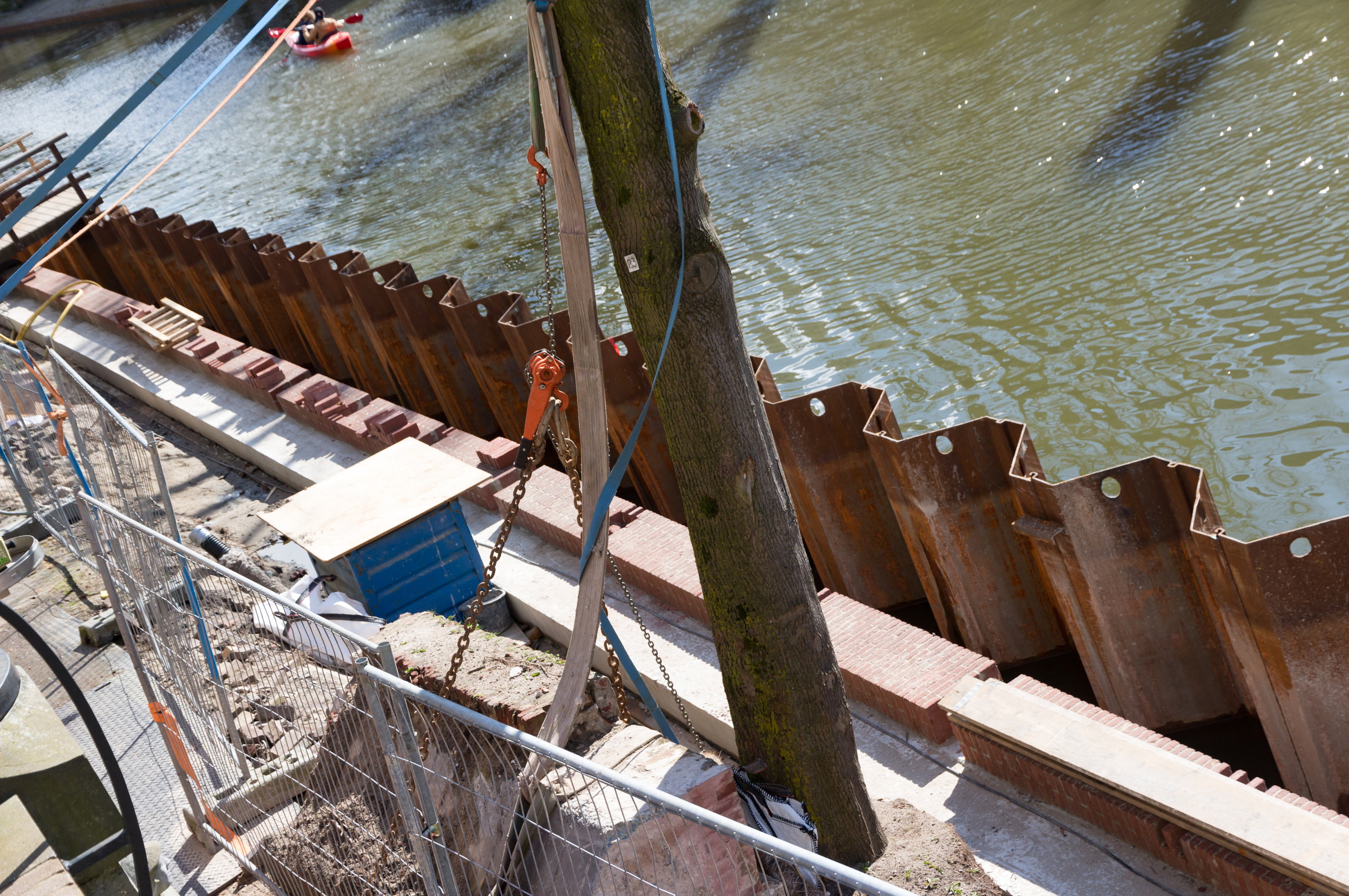
Real-world Example:
In some large-scale projects, like constructing a retaining wall for a flood defence system or urban excavation projects, cold-rolled sheet piles are often selected because they are more cost-effective and can still handle the job when extreme strength is not required. For instance, a municipal project building a flood barrier in a moderately pressured environment may choose cold-rolled U-shaped piles because of their quicker installation and lower cost, making them ideal for lighter-duty applications. However, hot-rolled Z-shaped piles would typically be the preferred choice in high-pressure projects, like the construction of a deep-sea harbour, due to their greater load-bearing capacity and ability to withstand significant bending stresses.
Environmental Impact
Steel sheet piling not only provides structural support but also helps protect against environmental hazards. For example, it is commonly used to prevent soil erosion, manage water runoff, or create cut-off walls to control groundwater flow. Moreover, its reusability in temporary structures reduces material waste, making it a more sustainable option in certain applications. In environmentally sensitive areas, techniques like pressing can minimise noise and vibration, which reduces the impact on surrounding ecosystems.
Conclusion
Steel sheet piles are a highly versatile and efficient solution for various construction projects. It is the go-to method for creating strong, stable barriers, from small municipal works to large-scale waterfront structures. Understanding the different types of sheet piles and installation methods can help you choose the right option for your specific project needs, ensuring long-term durability and efficiency.
Related Products from Aema Steel
- Hot Rolled U Type Sheet Piles
- Hot Rolled Z Type Sheet Piles
- Cold Formed U Type Sheet Piles
- Cold Formed Z Type Sheet Piles
- PVC Vinyl Sheet Piles
- Steel Pipe Piles
- Welded H Piles
Contact us today to receive a tailored offer for your upcoming project.

